Physics of Cell Motility, Sensing, and Mechanics

Publications, Notes, and Errata
Web interface for finite size corrections in membrane MD
Mathematical Contest in Modeling
Collaborators:
- Konstantinos Konstantopoulos (JHU)
- Benoit Ladoux (CNRS)
- Andrew Ewald (JHU)
- Amrinder Nain (Virginia Tech)
- Francesca Serra (SDU)
- Wouter-Jan Rappel (UCSD)
- Herbert Levine (Rice)
- Frank Brown (UCSB)
- Bo Li (UCSD)
- Paul Atzberger (UCSB)
- Everett Lipman (UCSB)
- Richard Pastor (NIH)
- Michael Lerner (Earlham)
- Yanxiang Zhao (GWU)
Publications, Notes, and Errata
This page includes some commentary and PDFs and is updated from time to time, but the most recent list of publications is available via Google scholar.
* = equal contribution or alphabetical order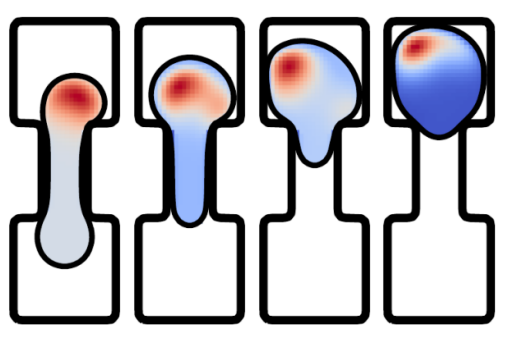 | Nonlinear dynamics of confined cell migration--modeling and inferenceP. Zadeh and B.A. Camley arxiv preprint 2024 [preprint] | 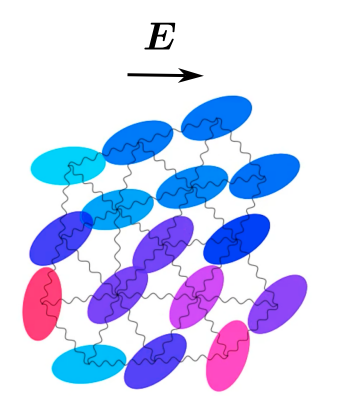 | Does nematic order allow groups of elongated cells to sense electric fields better?K. Kaiyrbekov and B.A. Camley arxiv preprint 2024 [preprint] | 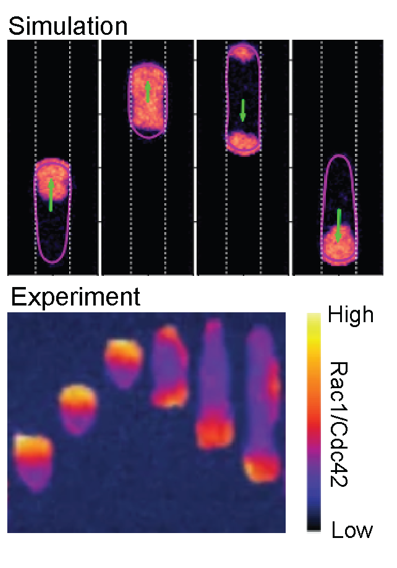 | Deposited footprints let cells switch between confined, oscillatory, and exploratory migrationE. Perez Ipiña, J. d'Alessandro, B. Ladoux, B.A. Camley PNAS (direct submission) 2024 [link][code] | 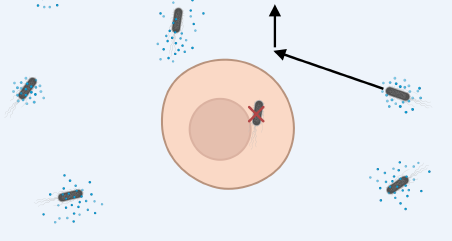 | Trade-offs in concentration sensing in dynamic environmentsA. Kashyap, W. Wang and B.A. Camley Biophys. J. 2024 [link][code][related new and notable] | 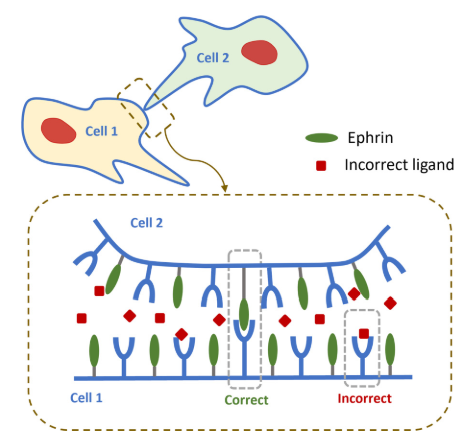 | Limits on the accuracy of contact inhibition of locomotionW. Wang and B.A. Camley Phys. Rev. E 2024 [link][code] |  | Migration and division in cell monolayers on substrates with topological defectsK. Kaiyrbekov*, K. Endresen*, K. Sullivan, Y. Chen, Z. Zheng, F. Serra, and B.A. Camley PNAS (direct submission) [link][code] | 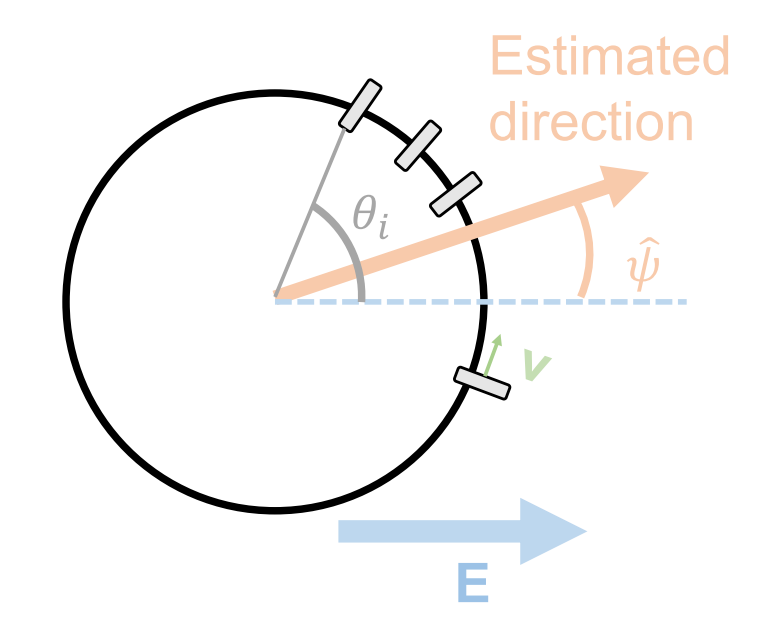 | Physical limits on galvanotaxisI. Nwogbaga*, A Hyun Kim* and B.A. Camley Phys. Rev. E 2023 [link][code] |
 | Physical limits to membrane curvature sensing by a single proteinI. Badvaram, and B.A. Camley Phys. Rev. E 2023[link][code] |
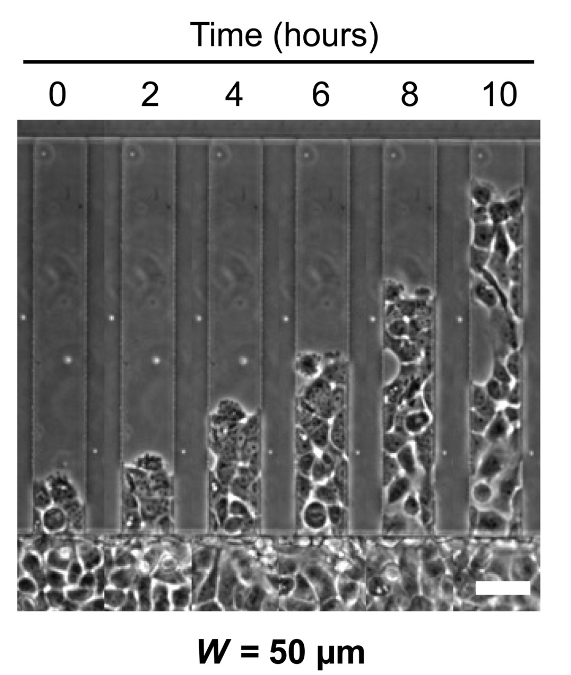 | Cytokinesis machinery promotes cell dissociation from collectively migrating strands in confinementR.A. Law, A. Kiepas, H.E. Desta, E. Perez Ipiña, M. Parlani, S.J. Lee, C.L. Yankaskas, R. Zhao, P. Mistriotis, N. Wang, Z. Gu, P. Kalab, P. Friedl, Science Advances (2023) [link][code] |
 | Coupling cell shape and velocity leads to oscillation and circling in keratocyte galvanotaxisI. Nwogbaga and B.A. Camley Biophysical Journal (2023) [link][code] |
 | Picking winners in cell-cell collisions: wetting, speed, and contactP. Zadeh and B.A. Camley Phys. Rev. E 2022 [link][code] |
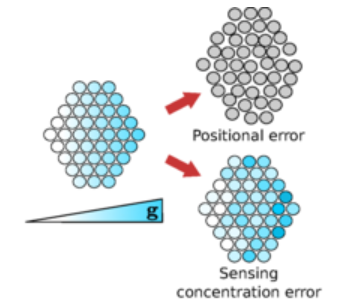 | Collective gradient sensing with limited positional informationE. Perez Ipiña and B.A. Camley Phys. Rev. E 2022 [link][code] |
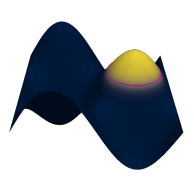 | Sensing the shape of a cell with reaction-diffusion and energy minimizationA.R. Singh, T. Leadbetter and B.A. Camley PNAS (direct submission) 2022 [link] [code] |
 | Active gels, heavy tails, and the cytoskeletonD.W. Swartz and B.A. Camley Soft Matter 2021 [link][preprint] [code] (cover article) |
Rules of contact inhibition of locomotion for cells on suspended nanofibersJ. Singh, A. Pagulayan, B.A. Camley*, and A.S. Nain* PNAS (direct submission) 2021 [link][code] |
 | Cellular memory in eukaryotic chemotaxis depends on the background chemoattractant concentrationR. Karmakar, M.-H. Tang, H. Yue, D. Lombardo, A. Karanam, Phys. Rev. E [journal link]2021 |
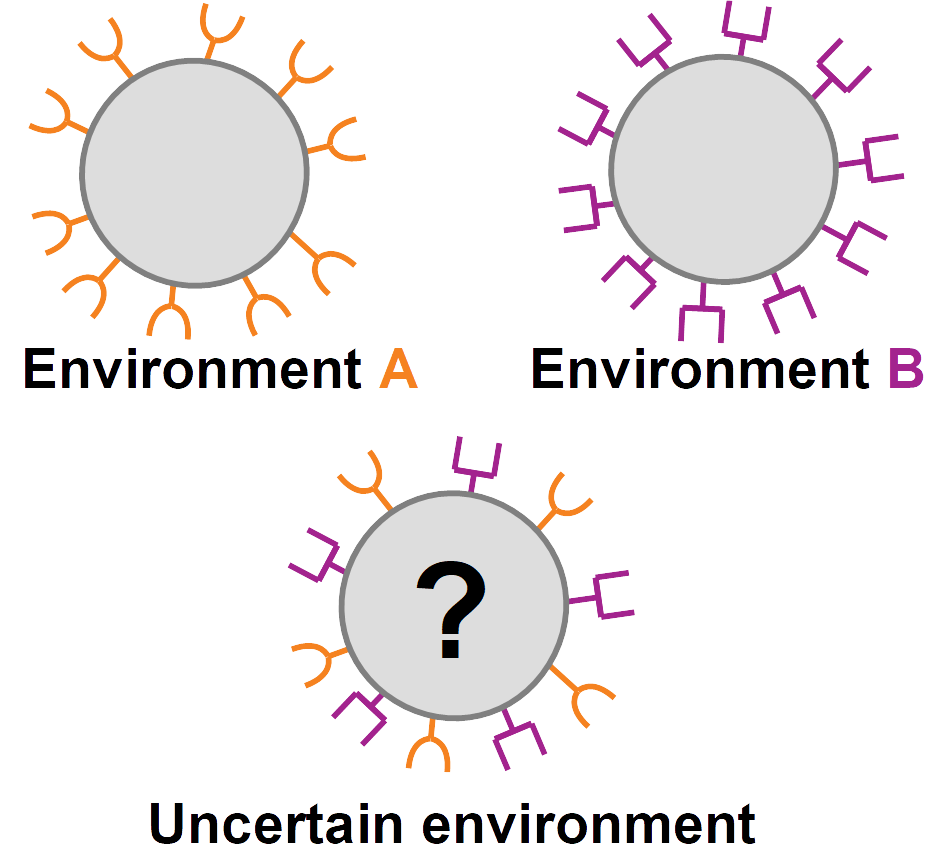 | Chemotaxis in uncertain environments: Hedging bets with multiple receptor typesA. Hopkins, B.A. Camley Phys. Rev. Research 2020 [open access paper][code] |
 | Hydrodynamic effects on the motility of crawling eukaryotic cellsM.H. Mai, B.A. Camley Soft Matter 2020 [link][preprint][code] |
 | Leader cells in collective chemotaxis: optimality and trade-offsA. Hopkins, B.A. Camley Phys. Rev. E. 2019, [link][preprint][code] |
 | Cell motility dependence on adhesive wettingY. Cao, R. Karmakar, E. Ghabache, E. Gutierrez, Y. Zhao, A. Groisman, H. Levine, B.A. Camley and W.-J. Rappel Soft Matter 2019, [link] [preprint] |
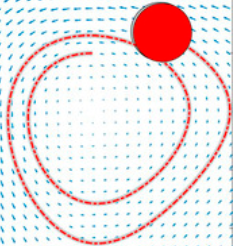 | Motion of objects embedded in lipid bilayer membranes: Advection and effective viscosityB.A. Camley and F.L.H. Brown J. Chem. Phys 2019, [link] [preprint][code] |
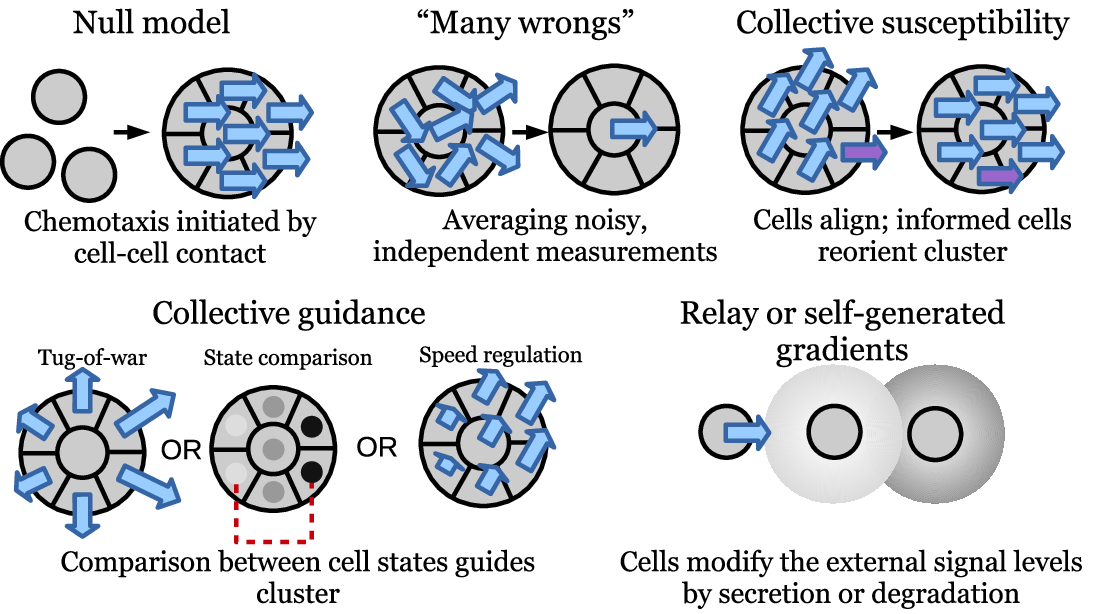 | Collective gradient sensing and chemotaxis: modeling and recent developmentsB.A. Camley J. Phys. Cond. Mat. 2018 [invited review] [link] This review is probably the first thing I would recommend someone read to get a sense of the group's current interests. Erratum: Figure 3B, cells shown are MCF10A instead of MDCK -- thanks to Raimon Sunyer! |
 | Minimal network topologies for signal processing during collective cell chemotaxisH. Yue, B.A. Camley and W.-J. Rappel Biophys. J. 2018, [link] |
 | Physical models of collective cell motility: from cell to tissueB.A. Camley and W.-J. Rappel J. Phys. D 2017, [link][pdf] |
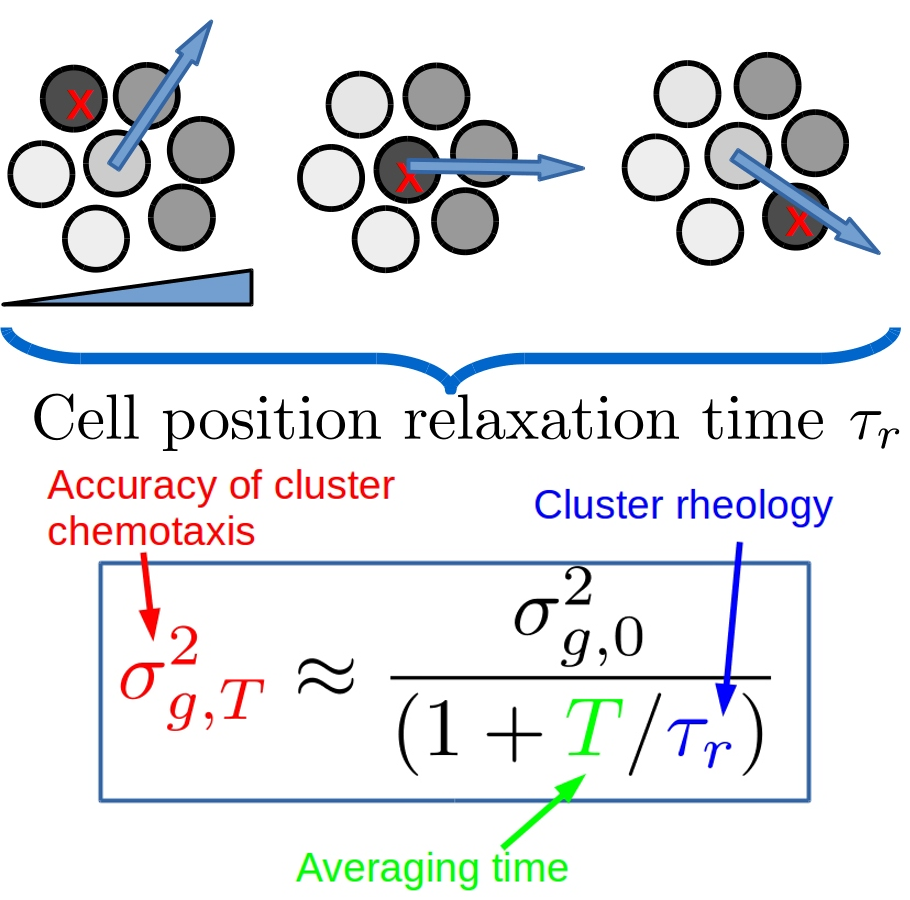 | Cell-to-cell variation sets a tissue-rheology-dependent bound on collective gradient sensingB.A. Camley and W.-J. Rappel, PNAS (Direct submission) [link][preprint] [code] |
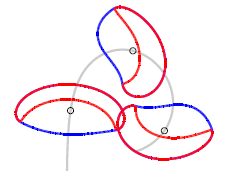 | Crawling and turning in a minimal reaction-diffusion cell motility model: coupling cell shape and biochemistryB.A. Camley*, Yanxiang Zhao*, Bo Li, Herbert Levine, and W.-J. Rappel[Editor's Suggestion] Phys. Rev. E 2017, [link][preprint] |
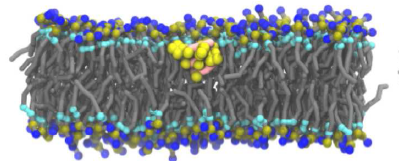 | Lipid and peptide diffusion in bilayers: the Saffman-Delbruck model and periodic boundary conditionsR.M. Venable, H.I. Ingolfsson, M.G. Lerner, B.S. Perrin, Jr.,B.A. Camley, S.J. Marrink, F.L.H. Brown, and R.W. Pastor J. Phys. Chem. B 2016, [link] To go with this paper, we built a web interface for estimating PBC corrections and membrane viscosities at diffusion.lobos.nih.gov (Work by me, Scott Perrin) |
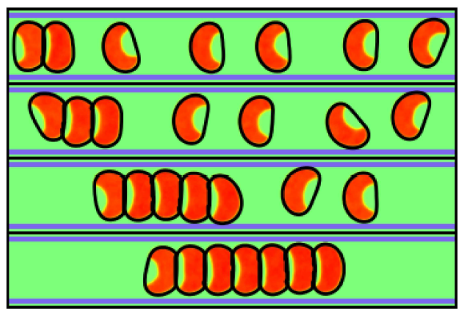 | Modeling contact inhibition of locomotion of colliding cells migrating on micropatterned substratesD.A. Kulawiak,B.A. Camley, and W.-J. Rappel PLOS Computational Biology 2016, [link][pdf] |
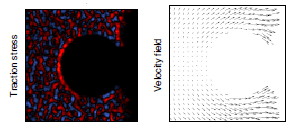 | Contact inhibition of locomotion determines cell-cell and cell-substrate forces in tissuesJ. Zimmermann, B.A. Camley, W.-J. Rappel and H. Levine PNAS (contributed by H. Levine) 2016, [link] |
 | Collective signal processing in cluster chemotaxis: roles of adaptation, amplification, and co-attraction in collective guidanceB.A. Camley, J. Zimmermann, H. Levine, and W.-J. Rappel PLOS Computational Biology [link][preprint] |
 | Emergent collective chemotaxis without single-cell gradient sensing[Editor's Suggestion, Featured in Physics]B.A. Camley, J. Zimmermann, H. Levine, and W.-J. Rappel Phys. Rev. Lett. 2016, [link] [preprint] |
 | Strong influence of periodic boundary conditions on lateral diffusion in lipid bilayer membranesB.A. Camley, M.G. Lerner, R.W. Pastor, and F.L.H. Brown, J. Chem. Phys. 2015, [link] Erratum: the MARTINI values in Table I were generated with L = 25 nm and H = 5 nm, not L = 15 nm and H = 2 nm. A web interface to compute the periodic diffusion coefficient from this paper and estimate membrane viscosities is available at diffusion.lobos.nih.gov (Work by me, Scott Perrin) |
 | Calculating hydrodynamic interactions for membrane-embedded objectsE. Noruzifar, B.A. Camley and F.L.H. Brown, J. Chem. Phys. 2014, [link] |
 | Polarity mechanisms such as contact inhibition of locomotion regulate persistent rotational motion of mammalian cells on micropatternsB.A. Camley, Y. Zhang, Y. Zhao, B. Li, E. Ben-Jacob, H. Levine, and W.-J. Rappel, PNAS (contributed by H. Levine) 2014, [link] |
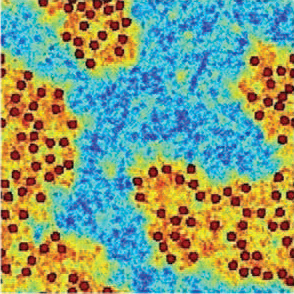 | Fluctuating hydrodynamics of multicomponent membranes with embedded proteinsB.A. Camley and F.L.H. Brown, J. Chem. Phys. 2014, [link] |
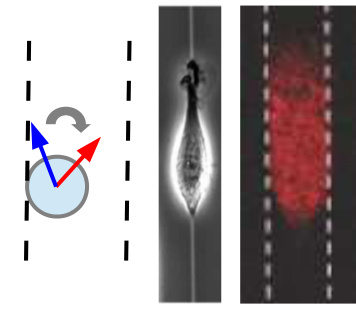 | Velocity alignment leads to high persistence in confined cellsB.A. Camley and W.-J. Rappel, Phys. Rev. E 2014, [link] [pdf] |
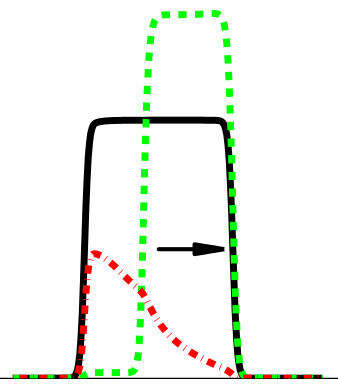 | Periodic migration in a physical model of cells on micropatternsB.A. Camley, Y. Zhao, B. Li, H. Levine, and W.-J. Rappel, Phys. Rev. Lett. 2013, [link] [pdf] |
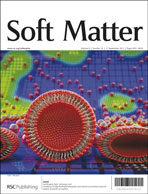 | Simulation of Edge Facilitated Adsorption and Critical Concentration Induced Rupture of Vesicles at a SurfaceP. Plunkett, B.A. Camley, K. Weirich, J. Israelachvili and P. Atzberger, Soft Matter 2013 (cover article), [link] [pdf] |
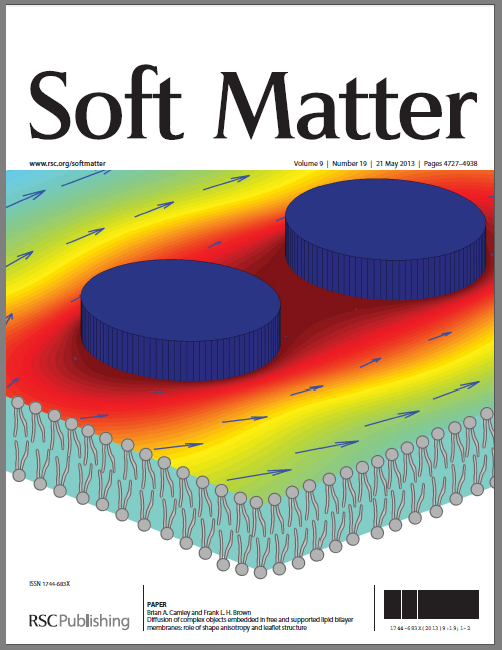 | Diffusion of complex objects embedded in free and supported lipid bilayer membranes: role of shape anisotropy and leaflet structureB.A. Camley and F.L.H. Brown, Soft Matter 2013 (cover article), [link] [pdf] There is a typo on p.4773 - the experimental range of b is roughly 107 poise/cm, not 10-7. |
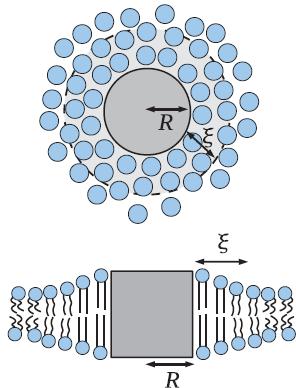 | Contributions to membrane-embedded-protein diffusion beyond hydrodynamic theoriesB.A. Camley and F.L.H. Brown, Phys. Rev. E. 2012, [link] [pdf] |
 | Dynamic scaling in phase separation kinetics for quasi-two-dimensional membranesB.A. Camley and F.L.H. Brown, J. Chem. Phys. 2011 [link] [pdf] See also: Camley and Brown J. Chem. Phys. 2014 for more details and extensions to the method. Stanich et al. looked at scaling laws experimentally after we published. One point I think we didn't make strongly enough in this paper is that there could be other regimes that we didn't find - this is a very complicated problem, and we have not explored the boundary between regimes carefully! |
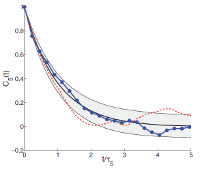 | Beyond the creeping viscous flow limit for lipid bilayer membranes: Theory of single-particle microrheology, domain flicker spectroscopy, and long-time tailsB.A. Camley and F.L.H. Brown, Phys. Rev. E. 2011, [link] [pdf] |
 | Dynamic simulations of multicomponent lipid membranes over long length and time scalesB.A. Camley and F.L.H. Brown, Phys. Rev. Lett. 2010, [link] [pdf] This is a relatively short paper, and we have extended it: definitely see Camley and Brown J. Chem. Phys. 2011 and Camley and Brown J. Chem. Phys. 2014 for important details about the simulation algorithm and its application. The 2011 paper contains more details about the scaling laws and a proof that Stratonovich is the correct interpretation; the 2014 paper discusses more about the details of parameter matching (e.g. bare vs renormalized parameters) and numerical implementation. In particular, this paper shows simulations where the effective parameters match the input ones (domain at 0.8 pN bare line tension), and ones where they become renormalized (0.1 pN, where the domain shrinks). The 2014 paper explains more about when you would expect these renormalizations. Also note that statistical errors are pretty big in Fig. 1: refining this might require system size corrections (Camley et al. J. Chem. Phys. 2015) and comparison to the fluid domain diffusion coefficient. |
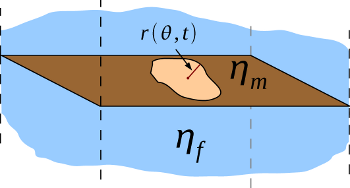 | Lipid bilayer domain fluctuations as a probe of membrane viscosityB.A. Camley, C. Esposito, T. Baumgart, and F.L.H. Brown, Biophys. J. 2010, [link] [pdf] [preprint pdf with better figures] |
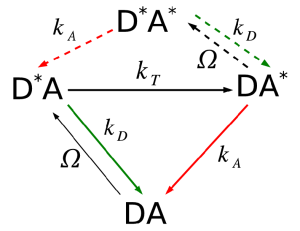 | Forster transfer outside the weak-excitation limitB.A. Camley, F.L.H. Brown, and E. Lipman, J. Chem. Phys. 2009, [link] [pdf] An interesting experimental paper on power-dependence that may be related is Nettels et al. 2015. |